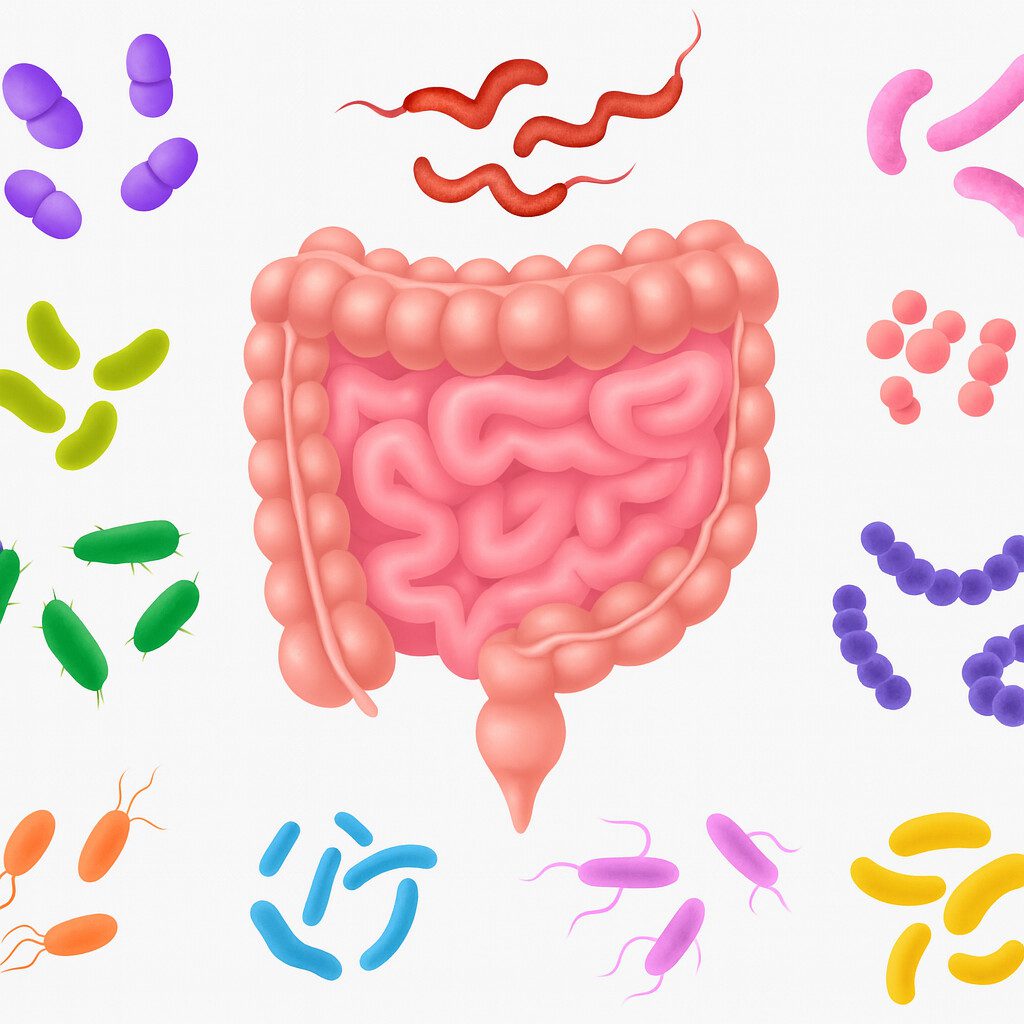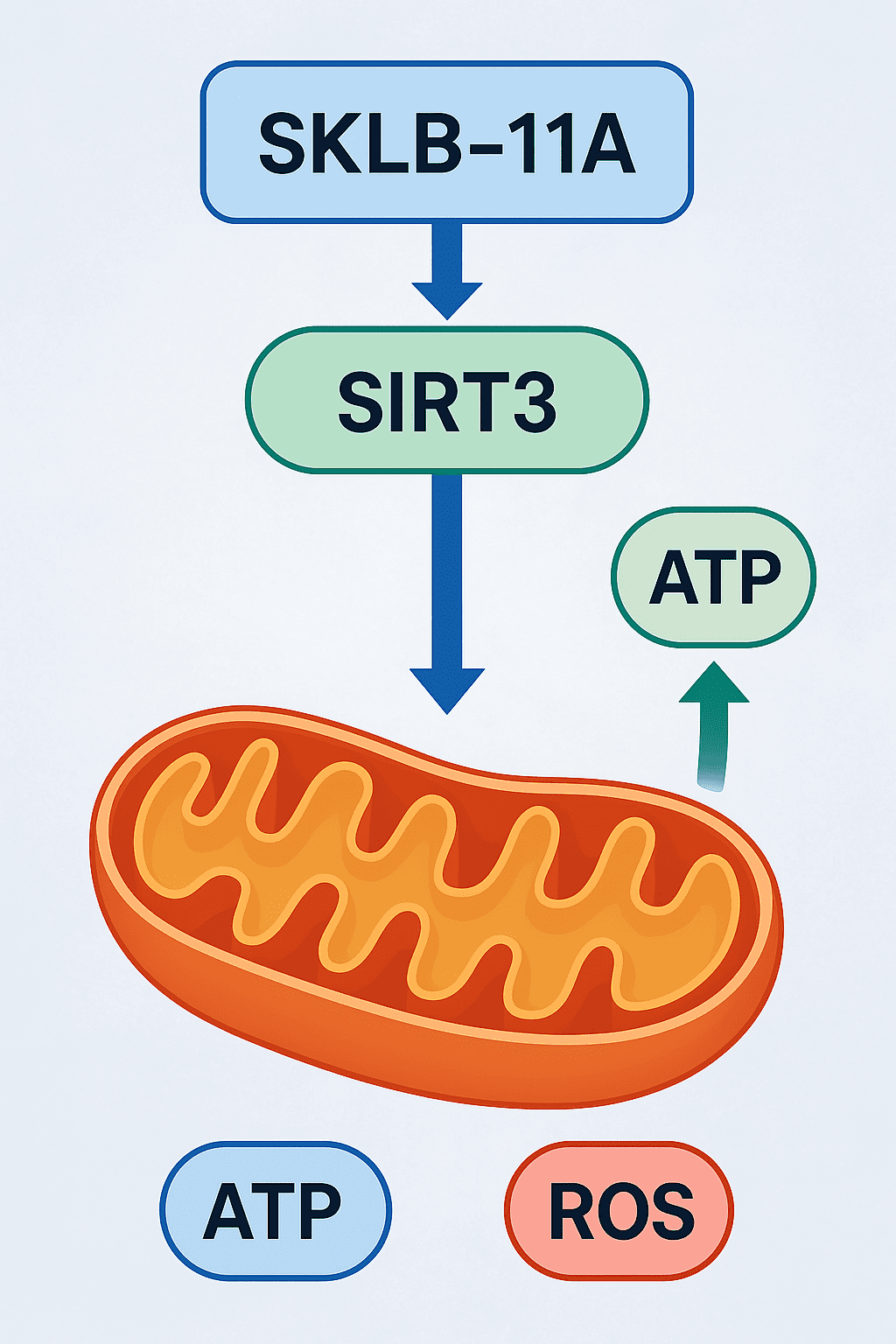Photosensitizers Explained: Mechanism, Types, and Applications
Abstract
Photosensitizers are light-sensitive compounds that play a critical role in technologies ranging from cancer therapy to solar energy. Upon light activation, they transfer energy to surrounding molecules, producing reactive oxygen species (ROS) that drive chemical or biological changes. This blog post explores how photosensitizers work, their chemical classes—such as porphyrins, phthalocyanines, and BODIPY dyes—and their major applications, including photodynamic therapy (PDT), dye-sensitized solar cells (DSSCs), photocatalysis, and bioimaging. It also highlights current challenges, like light penetration and photostability, while discussing future directions involving near-infrared absorption and smart delivery systems. As research progresses, photosensitizers are becoming essential tools for sustainable healthcare and energy solutions.
Introduction to Photosensitizers
Photosensitizers are light-activated compounds that play a vital role in a wide range of scientific and technological fields, including medicine, energy, and chemistry. In simple terms, a photosensitizer is a molecule that absorbs light and uses that energy to trigger a chemical change in another substance. This light-induced activation is what makes photosensitizers so powerful in both biological and industrial applications.
When a photosensitizer is exposed to specific wavelengths of light (usually in the visible or near-infrared spectrum), it becomes “excited,” moving to a higher energy state. The molecule can then transfer this energy to surrounding molecules, typically oxygen, to form reactive oxygen species (ROS) such as singlet oxygen. These ROS are highly reactive and can damage or modify other molecules, which is why photosensitizers are particularly useful in targeted therapies like Photodynamic Therapy (PDT) for cancer treatment.
Photosensitizers are also widely used in solar energy conversion, particularly in dye-sensitized solar cells (DSSCs), where they help capture sunlight and convert it into electrical energy. In addition, they have growing applications in photocatalysis, water purification, antibacterial treatments, and fluorescence imaging.
With their light-controllable activity and growing adaptability, photosensitizers are increasingly engineered for high selectivity, improved stability, and optimized light absorption. This versatility makes them essential tools in both emerging and established technologies.
How Photosensitizers Work (The Mechanism)
The mechanism behind photosensitizers is rooted in photochemistry—the study of how light interacts with molecules. When a photosensitizer absorbs light, it transitions from its ground state to an excited singlet state. This is an unstable, high-energy configuration. From there, the molecule can undergo a process called intersystem crossing, converting into an excited triplet state, which is more stable and long-lived.
This excited triplet state is the key to its chemical activity. The photosensitizer can now interact with surrounding molecules via two main pathways:
Type I mechanism: The excited photosensitizer transfers an electron or hydrogen atom to a substrate, forming free radicals. These radicals then react with oxygen to generate damaging species like superoxide or hydroxyl radicals.
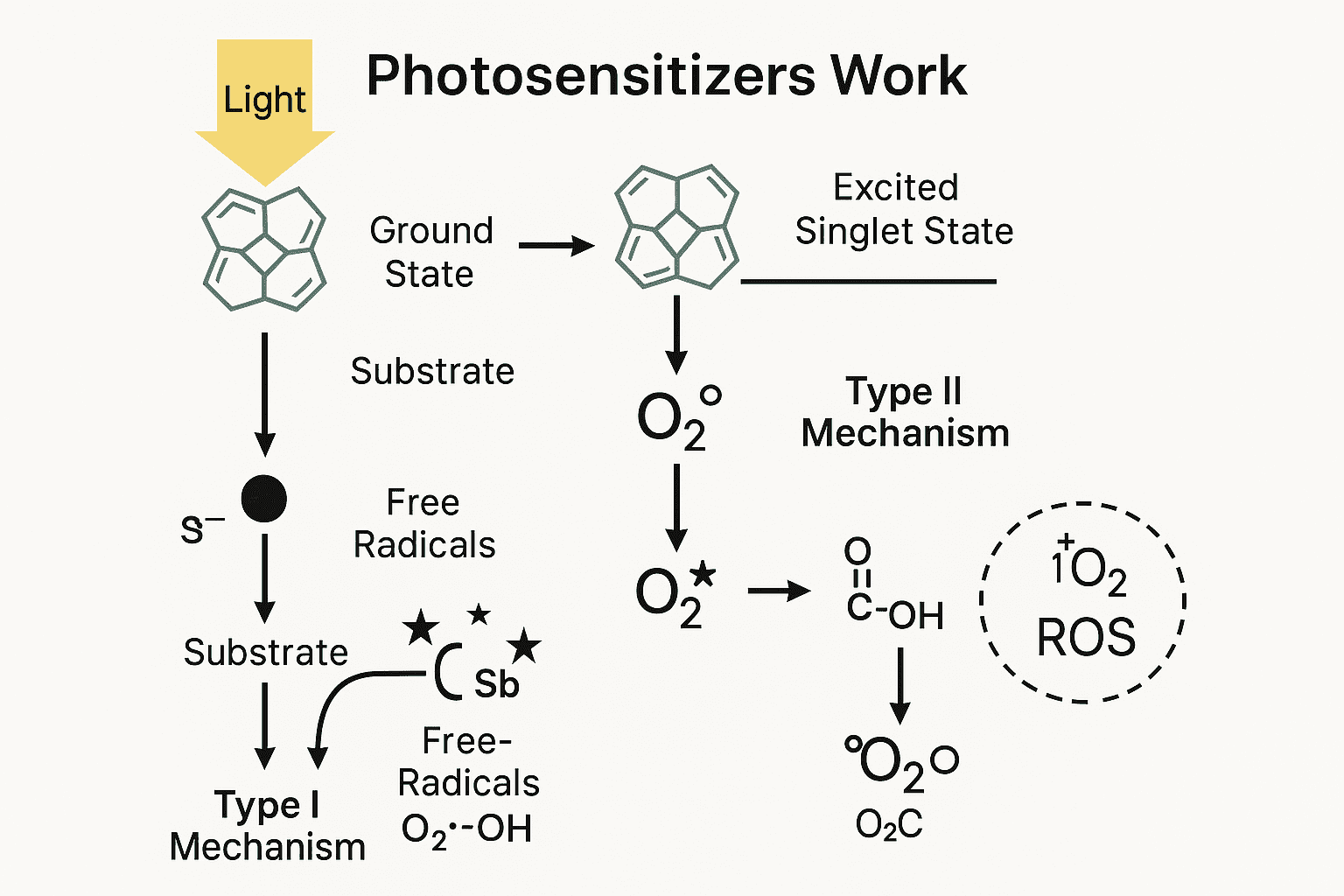
Type II mechanism: The photosensitizer transfers energy directly to ground-state molecular oxygen (O₂), producing singlet oxygen (¹O₂), a highly reactive form of oxygen that can oxidize proteins, lipids, and DNA.
Both mechanisms result in the formation of reactive oxygen species (ROS)—chemicals that are highly destructive to biological and chemical structures. This is particularly useful in photodynamic therapy (PDT), where photosensitizers are used to selectively destroy cancerous tissues after light activation.
The efficiency of a photosensitizer depends on several factors, including its absorption spectrum, quantum yield, photostability, and tissue penetration depth of the activating light. New-generation photosensitizers are being designed to absorb longer wavelengths of light (e.g., near-infrared) to penetrate deeper into tissues.
Types of Photosensitizers
Photosensitizers come in various chemical structures and functional classes, each suited for specific applications. The effectiveness of a photosensitizer depends on its light absorption properties, reactivity, stability, and targeting capability. Below are the major categories of photosensitizers used today:
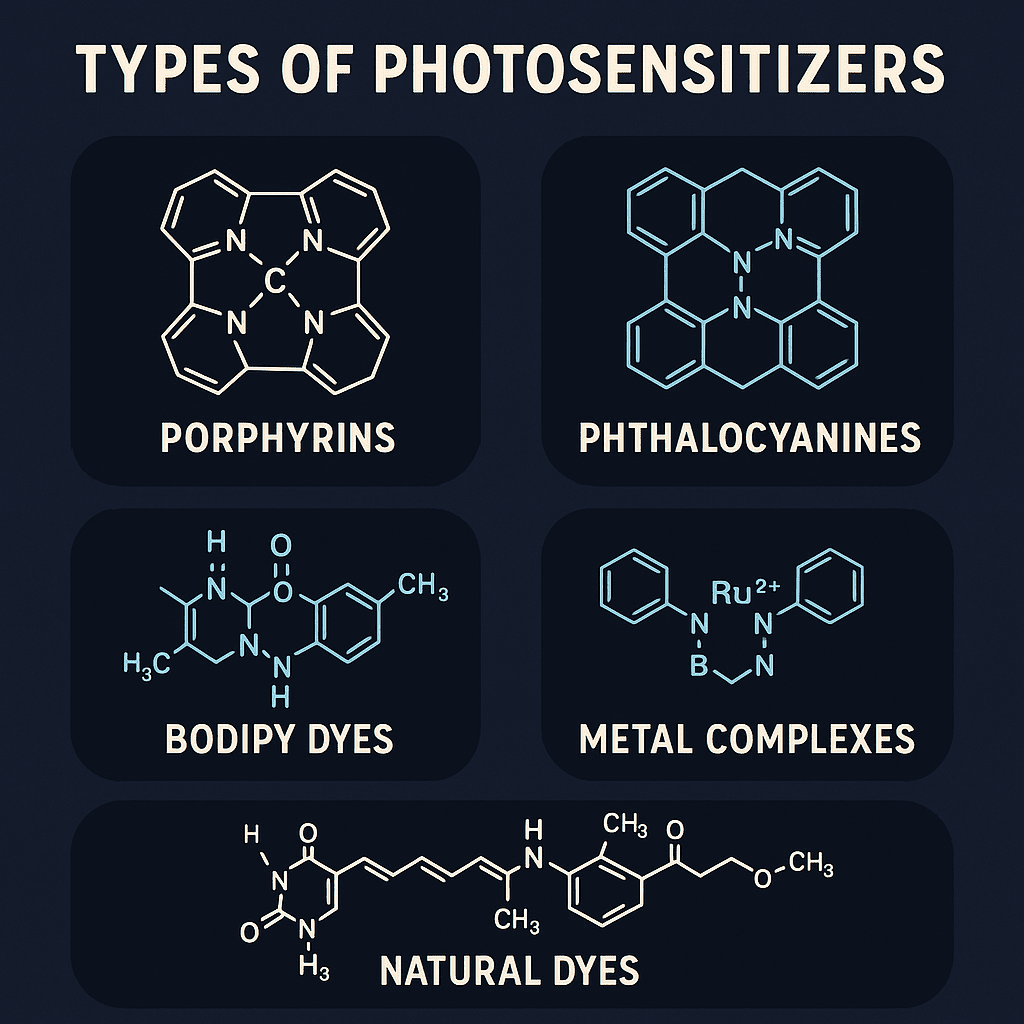
Porphyrins
Porphyrins are some of the most widely used photosensitizers, particularly in photodynamic therapy (PDT). Their natural affinity for cancer cells and strong absorption in the visible spectrum make them ideal. Examples include Photofrin and hematoporphyrin derivatives.
Phthalocyanines
Phthalocyanines are synthetic analogs of porphyrins with enhanced photostability and stronger absorption in the near-infrared (NIR) region, allowing for deeper tissue penetration. Their tunable structure makes them excellent candidates for both medical and solar applications.
BODIPY Dyes (Boron-dipyrromethene)
These are fluorescent photosensitizers often used in bioimaging and targeted PDT. They are known for their high quantum yield, chemical stability, and ease of functionalization.
Metal Complexes (e.g., Ruthenium and Iridium Complexes)
Transition-metal complexes like Ru(bpy)₃²⁺ offer excellent redox properties and are often used in photocatalysis and dye-sensitized solar cells (DSSCs). Their photophysical properties can be fine-tuned by altering ligands.
Natural Dyes (e.g., Chlorophyll, Curcumin)
These eco-friendly and biodegradable options are gaining popularity in sustainable photocatalysis and agriculture.
Different applications require different types of photosensitizers, and ongoing research continues to develop new materials with optimized absorption spectra, minimal toxicity, and enhanced selectivity.
Applications of Photosensitizers
Photosensitizers have found powerful applications across several industries due to their ability to convert light energy into chemical activity. Below are the most significant areas where photosensitizers are making an impact:
Photodynamic Therapy (PDT)
One of the most well-known uses of photosensitizers is in cancer treatment. In PDT, a photosensitizer is introduced into the body and selectively accumulates in tumor cells. When exposed to a specific wavelength of light, the photosensitizer produces reactive oxygen species (ROS) that damage cellular components, leading to cell death. Approved agents include Photofrin, Verteporfin, and Temoporfin.
PDT is also used for antimicrobial treatments, targeting drug-resistant bacteria and viruses with minimal damage to healthy tissue.
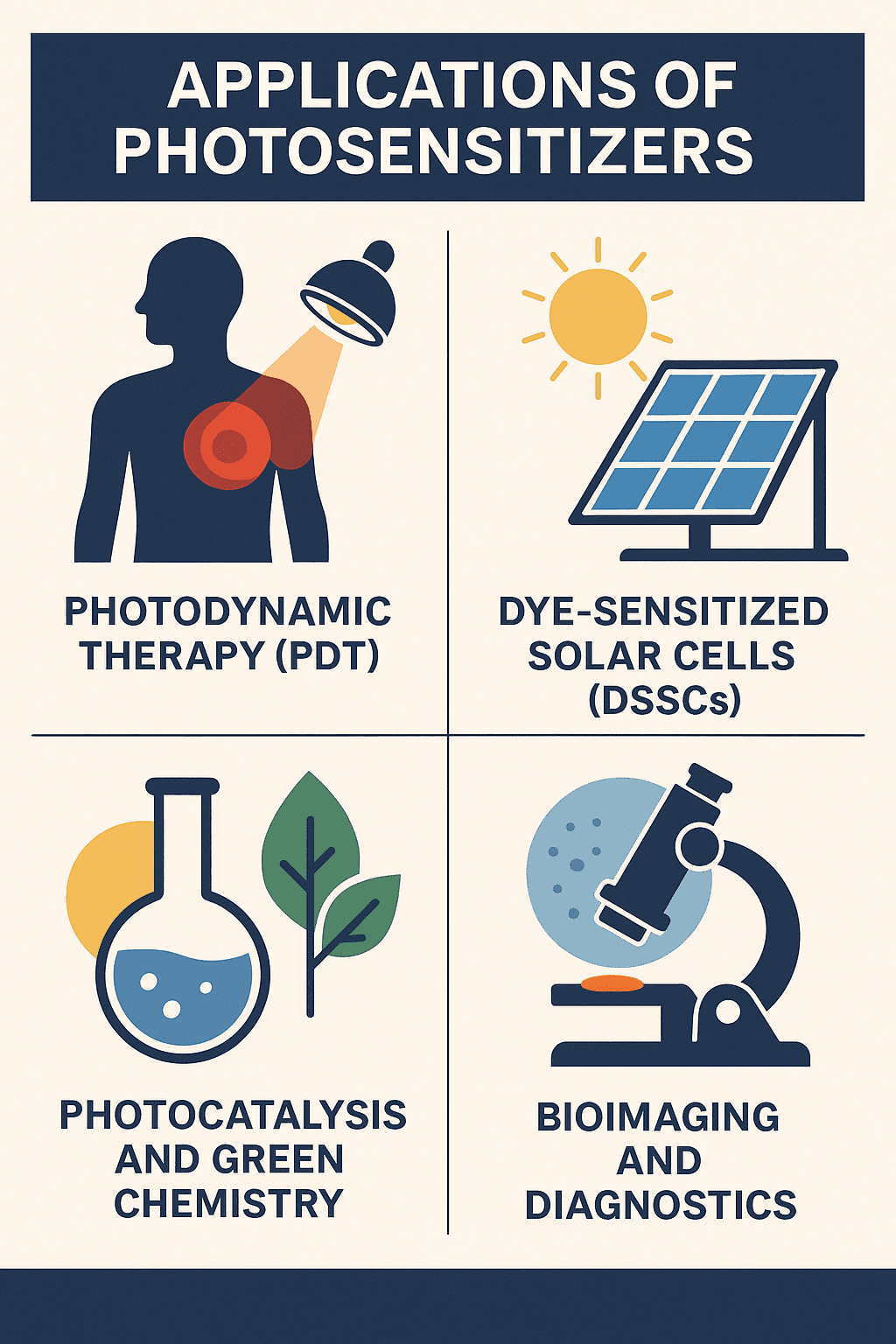
Dye-Sensitized Solar Cells (DSSCs)
In the field of renewable energy, photosensitizers are used to capture sunlight and transfer excited electrons to a semiconductor (usually titanium dioxide). This forms the basis of DSSCs, an efficient and low-cost alternative to traditional photovoltaic cells. Ruthenium-based dyes and organic sensitizers are popular in this application.
Photocatalysis and Green Chemistry
Photosensitizers enable light-driven chemical transformations, reducing the need for harsh reagents or conditions. They’re used in water splitting, CO₂ reduction, and organic synthesis, aligning with sustainability goals.
Bioimaging and Diagnostics
Certain fluorescent photosensitizers serve as imaging agents in cell biology and medical diagnostics, offering precise visualization at the cellular or molecular level.
From healthcare to clean energy, photosensitizers are enabling light-powered innovation that is targeted, efficient, and increasingly eco-friendly.
Conclusion
Photosensitizers are at the heart of many groundbreaking innovations in medicine, renewable energy, and green chemistry. By harnessing the power of light to trigger chemical reactions, these compounds enable precise and non-invasive therapies like photodynamic therapy (PDT), efficient solar energy conversion, and sustainable catalytic processes. Despite current challenges—such as limited tissue penetration and photostability—ongoing research is rapidly advancing the field. New generations of photosensitizers, especially those designed for near-infrared activation and smart delivery, are expanding their effectiveness and safety. As technologies like artificial intelligence and nanomedicine continue to evolve, the development of optimized, multifunctional photosensitizers will accelerate. Whether combating cancer, powering solar cells, or purifying water, photosensitizers are proving to be essential tools in building a healthier, cleaner, and more sustainable future.
References
Lucky, S. S., Soo, K. C., & Zhang, Y. (2015). Nanoparticles in photodynamic therapy. Chemical Reviews, 115(4), 1990–2042.
https://pubs.acs.org/doi/full/10.1021/cr5004198
Dolmans, D. E., Fukumura, D., & Jain, R. K. (2003). Photodynamic therapy for cancer. Nature Reviews Cancer, 3(5), 380–387.
https://www.nature.com/articles/nrc1071
Zhang, X., & Cole, J. M. (2015). Dye aggregation in dye-sensitized solar cells. Journal of Materials Chemistry A, 3(17), 9025–9031.
https://pubs.rsc.org/en/content/articlelanding/2017/ta/c7ta05632j/unauth
Castano, A. P., Demidova, T. N., & Hamblin, M. R. (2004). Mechanisms in photodynamic therapy: part one—photosensitizers, photochemistry and cellular localization. Photodiagnosis and Photodynamic Therapy, 1(4), 279–293.
https://www.sciencedirect.com/science/article/abs/pii/S1572100005000074
Idris, N. M., Gnanasammandhan, M. K., Zhang, J., Ho, P. C. L., Mahendran, R., & Zhang, Y. (2012). In vivo photodynamic therapy using upconversion nanoparticles as remote-controlled nanotransducers. Nature Medicine, 18(10), 1580–1585.
https://www.nature.com/articles/nm.2933
Agostinis, P., Berg, K., Cengel, K. A., Foster, T. H., Girotti, A. W., Gollnick, S. O., … & Krammer, B. (2011). Photodynamic therapy of cancer: an update. CA: A Cancer Journal for Clinicians, 61(4), 250–281.
https://acsjournals.onlinelibrary.wiley.com/doi/full/10.3322/caac.20114

